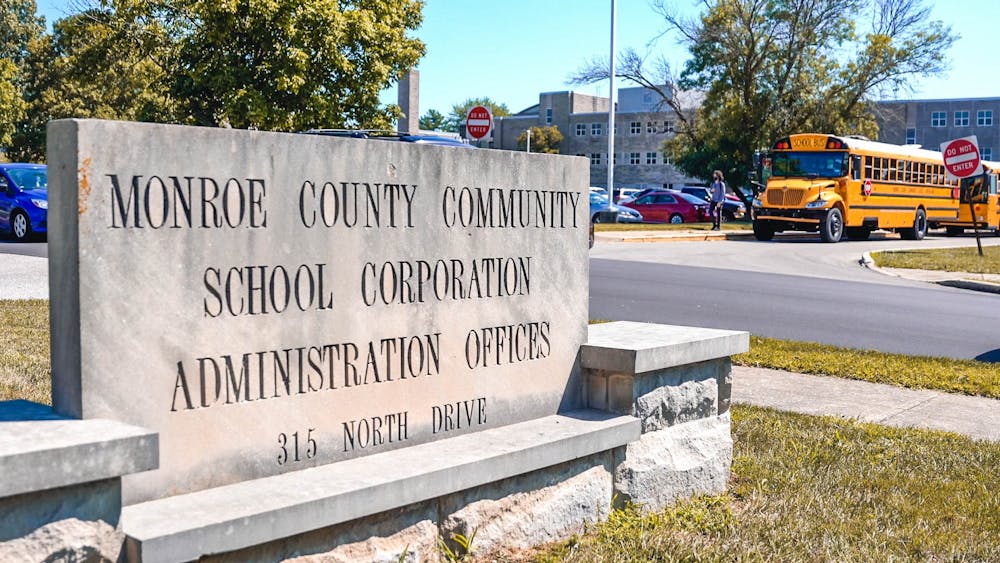Residents of nine different Indiana counties will find an extra question on their ballots Nov. 8, as their school corporations seek additional funding through referenda.
Among these nine school corporations, the Monroe County Community School Corporation voted June 28 to place a referendum on the 2022 ballot. A referendum allows the public to vote directly on an issue rather than relying on elected officials.
Related: [A Monroe County voter’s guide to the 2022 MCCSC referendum]
In this case, Monroe County residents will vote on whether they want to contribute $18.5 cents out of every $100 of assessed property value to MCCSC. According to the MCCSC referendum webpage, this rate would mean the average Monroe County household would pay an additional $125 in property taxes each year, or approximately $10.40 per month.
But don’t Indiana residents already pay taxes intended to adequately fund their public schools? And didn’t Indiana finish fiscal year 2022 with a $6.1 billion budget surplus? So why is MCCSC saying a failed referendum could mean over 100 positions eliminated, an inability to pay teachers fairly and cuts to art and STEM programs?
These are all questions Monroe County residents have been asking. A post with 160 comments on the “Bloomington, IN — What’s Going On?” Facebook group dissolved into a debate over the merits of the referendum. Many voiced their support, but Simon Higgs explained why he voted early and voted ‘no’ on the MCCSC referendum.
“I support the idea of increasing teacher salaries, etc., but I voted No to the referendum because it’s the wrong way to fund MCCSC,” Higgs said in a Facebook comment. “The money is already there, in taxes we’ve already paid, we don’t need a new tax. There’s a multibillion-dollar state surplus. It just needs to be allocated.”
Related: [MCCSC fills all teaching positions, but Indiana teachers face nationally low pay, public criticism]
The answer lies in Indiana’s complicated state funding structure that has been evolving for the past two decades, leaving schools increasingly reliant on referenda. According to the Education Data Initiative, Indiana currently ranks 40th in the nation in public education spending per pupil.
Indiana received a key court ruling on the constitutionality of its school funding system in 2008. In Bonner v. Daniels, Indiana was accused of failing to maintain a basic level of quality in public schools. The Indiana Supreme Court ruled in favor of the state — not defending the quality of Indiana public education, but rather finding the state constitution does not promise any enforceable standard of quality in schools.
The following year, 2009, came with major changes to the Indiana school funding system. Local property taxes stopped being used to fund schools’ day-to-day educational costs unless school corporations specifically asked voters for extra property tax money through referenda.
To help protect school funding after this decision, Indiana raised its sales tax from 6% to 7%. However, a recession hit as these changes were being made. The drop in sales tax, income tax and other sources of state funds created a strain and eventually hurt school funding.
In response to the recession, Indiana capped property taxes so that homeowners could not pay more than 1% of the total assessed property value. This cap still exists today. While helpful to property owners, it actually destabilizes the funding for school services such as transportation that are still reliant on property taxes.
When the tax rate rose and fell, it meant schools would collect about the same amount of money regardless of current property value. Now, if property value rises, schools still receive a fixed amount and fall behind the rest of the economy. In this scenario, many schools ask for a referendum.
Indiana still permits schools to continue funding transportation, infrastructure, playgrounds and more through property taxes. According to the Indiana Department of Education’s Digest of Public School Finance 2021-2023, 43% of property taxes collected in 2021, or $3.7 billion, went to public schools.
All of that money goes to schools’ Operations Funds which pay for non-classroom expenses. Referendum tax levies are the only form of property tax money that can be used to fund teacher salaries, student learning and other educational expenses.
There are three types of referendums legal in Indiana, and only one of the three can be used for day-to-day educational costs. The other two can be used to fund construction projects and safety features. MCCSC is seeking an operational referendum, the only type of referendum that can fund student learning and teacher salaries.
State legislation enacted in 2021 requires school corporations to submit a revenue spending plan to the state, outlining the expected amount of revenue and how it will be used.
MCCSC said referendum funds would be spent on teacher salaries, support staff wages and educational programs. According to the MCCSC referendum webpage, 87% of referendum dollars will go towards paying educators. Teachers will receive a $4,500 raise and support staff will see a $2.25 per hour wage increase. The remaining 13%, $1.2 million per year, would be used to fund special education services, performing arts and STEM programs.




